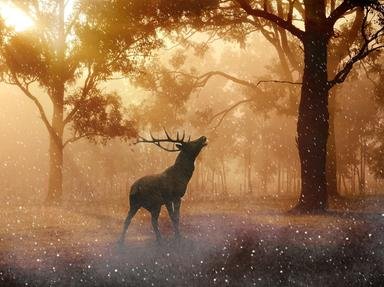Quiz Answer Key and Fun Facts
1. The featured animal of this quiz - Sus scrofa- is also called wild boar, wild swine, Eurasian wild pig or just wild pig. In which place on Earth wasn't it found originally, but introduced by humans?
2. Wutz, the wise wild pig, knows exactly where to go. What should you do, if you don't want her and her family romping on your lawn and harvesting your fruit?
3. Wutz, the wild sow, has to use her senses to get along. Which of these is her strongest one?
4. Wutz, the wild sow, doesn't live alone. What do you call a group of wild pigs?
5. Now look who is coming here. Eberhard, a mighty wild grown up boar.
Let's compare Eberhard to our wild sow, Wutz.
Which of these is wrong?
6. Let's talk about romance. Eberhard, the boar wants to be with the ladies. What WON'T he have to do to get their attention?
7. Romancing the wild sows had some effect. The involved ladies are expecting offspring. What do you call the offspring?
8. It's raining, it's pouring, the wild pig is snorting. The path in the park turns into a great, muddy puddle. Wutz and the other wild pigs enjoy wallowing in the wallow.
Three of these are reasons for doing this. Which one is NOT?
9. The wild pig isn't around that long.
In fact, it didn't exist at the time of Neanderthal man.
If you think you can believe me choose true. If you think I am a liar, pick false.
10. Let's look on the IUCN Red list (conservation status). In which classification do you find the European wild pig?
Source: Author
heidi66
This quiz was reviewed by FunTrivia editor
rossian before going online.
Any errors found in FunTrivia content are routinely corrected through our feedback system.
